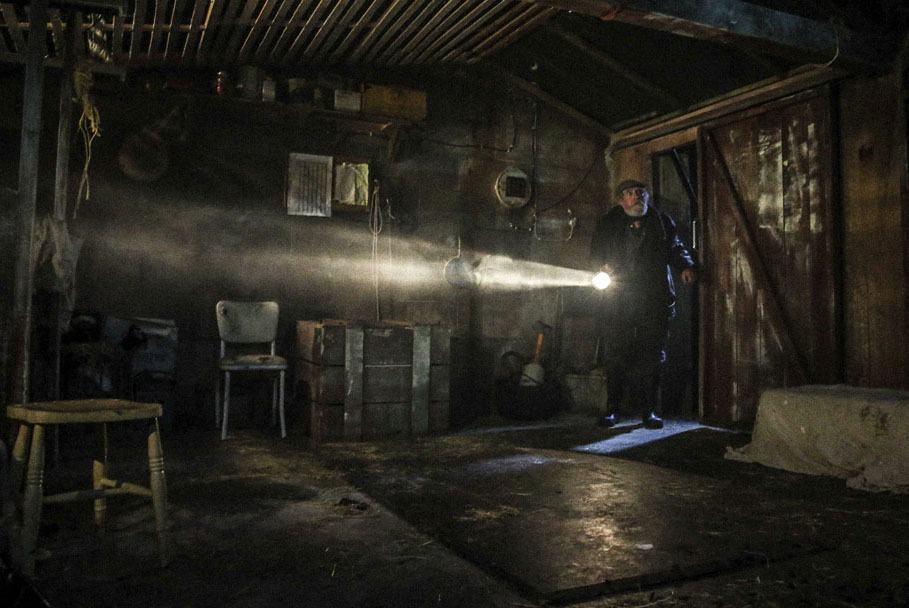There are times when change not only knocks on your door, it literally blows it off its hinges. Bea Roberts’ intimate portrayal of the end of one man’s livelihood, and the fall of another from his comfortable married and professional life, captures the moments when unlikely allegiances are made in acts of survival.
Michael, played by the very excellent David Fielder, is an ageing and widowed Devon dairy farmer pitting his hopes that his herd will not be condemned during the foot-and-mouth epidemic of 2001. He places his trust in Jeff (Nigel Hastings), a middle-class professional vet with a growing drink problem who he has developed a rapport with. They indulge in banter about their love lives and share a proclivity for the odd snifter.
In an absolute gem of a set designed by Max Dorey – a lovingly realised barn complete with hay-strewn floor, brushes, forks, old chairs and a slatted roof with beam – Fielder’s Michael gets you on side with his obvious love of his animals. One of his cows has just had a newborn calf. The delicacy of this new life affectively spurs the old farmer to take up arms against the faceless bureaucrats he believes are flying in the face of reason, and who care not a jot for the experience of his husbandry. When ‘trusted’ Jeff then appears to have sided with the ‘enemy’, the sparks begin to fly.
In folklore, Nightjars are emblematic portends of death. We hear the song of the bird at crucial junctures in this story. But despite the shadowy nature of the tale, Roberts’ writing always manages to dance along. These men are not two-dimensional. The rapport of the two, and their class difference, is explored in some playful passages, such as their attempt to pass time with an off-the-cuff pub quiz. These are red-bloodied and emotional beings. Michael fondly remembers his now deceased wife’s ‘arse’, and Jeff is clearly besotted by a daughter he now rarely sees.
Throughout, lighting designer Sally Ferguson compliments director Paul Robinson’s work. At one point, with no actor on stage, the lights take us from dusk to dark – leaving the set looking Caravaggioesque. And when the two men confront the inevitable pyre of destroyed animals, the starkness of light playing on their faces gives us all we need to sense the devastation in front of them. Max Perryment’s score works as a subversive, sometimes discordant backdrop that adds to the mounting disquiet.
Roberts’s piece leaves us with some hope, that even between two ageing and failing men there can be connection and resolve, even love. She is a writer who is equally at ease with farce and ferocity. Recommended. ★★★★☆ Simon Bishop 9th October 2015
Photos by Jack Sain


